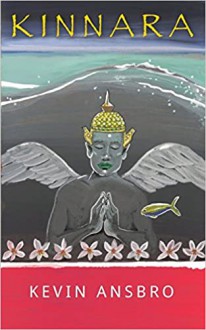
One of the things I adore about Kevin Ansbro’s writing is the assured way in which he reconciles the seemingly incompatible. Few authors can so effortlessly weave together the incongruity of a European serial killer with a SE Asian mythical being, trapped in a two thousand year purgatory at the bottom of the Andaman Sea. Yet, the remarkable journey on which the author takes the reader also enmeshes very familiar human themes of attachment and loss, romantic love and platonic friendship, alongside Buddhist notions of karma. It makes for a heady mix!
This blending of perceived contrasts, the exotic and mundane, is exemplified perhaps in the main locations for the tale. With all due respect to the inhabitants of East Anglia, Norwich (UK) and Phuket (Thailand) are, on the face of it, very different! Still, through the travails of the main characters, the author suggests that human experience is not entirely shaped by location, or culture. If not ‘fate’, sometimes things are just ‘meant to be’.
Take the British couple, Calum and Hannah, they are close friends at school, but then are separated by the vagaries of family moves, but it is Calum’s solo visit to Thailand that proves the catalyst for a potential reunion with his ‘true love’. As well as developing an immediate affinity for this unfamiliar territory, Calum befriends a young local man, Sawat Leelapun, with a shared interest in martial arts, but a very different trajectory in life. As a boy, Sawat has survived the 2004 tsunami, but experienced the attendant tragedy and challenges that followed. He too has a significant other (‘Nok’), but more central is the bond formed between the two men and the influence of Sawat’s humble nature on his hot-headed British friend. As well as helping Calum reflect on his own approach to life, like the knock-on effect of dominoes, Sawat also confides in his friend an incredible secret he has harboured since childhood and introduces the reader to the mythical Kinnara.
This diversion into supernatural elements is not new for the author, but offers a very helpful vehicle for expressing the clear affection with which Mr Ansbro regards the people and culture of Thailand. ‘Klahan Kinnara’ is a prince among the mythical swan people, cast into the sea, spellbound and destined to be alone for eternity. Klahan is also separated from his beloved and like his human counterparts shares a profound sense of loss. The question posed by the story is whether the three couples can all rely on fate/karma/good fortune, or perhaps the invincible nature of their collective love, to generate similarly happy outcomes?
The fly in the ointment, of course, is the serial murderer I mentioned, but whilst the author has a penchant for a dash of the macabre, it is never arbitrary. Rather the latent threat is a further development of the contrast between good and evil. Just as the reader might hope for good things to happen to good people, the reverse can also be quite satisfying. With 'Kinnara' , the author has skilfully delivered another exhilarating and emotional ride for the reader and has secured another spot on my favourites shelf.


 Log in with Facebook
Log in with Facebook 












